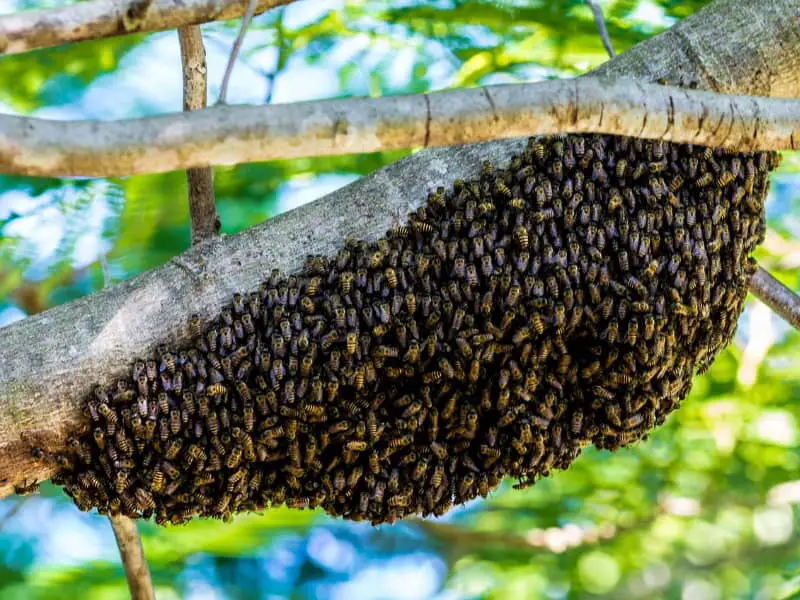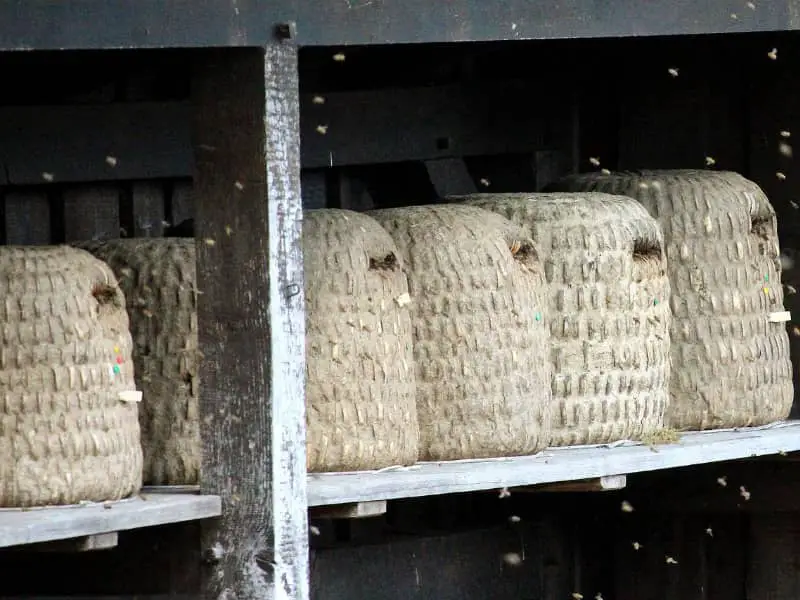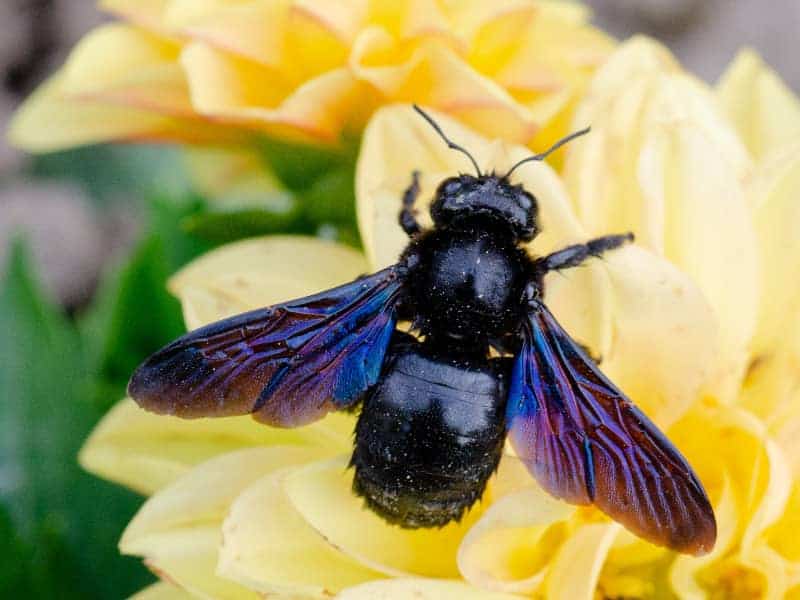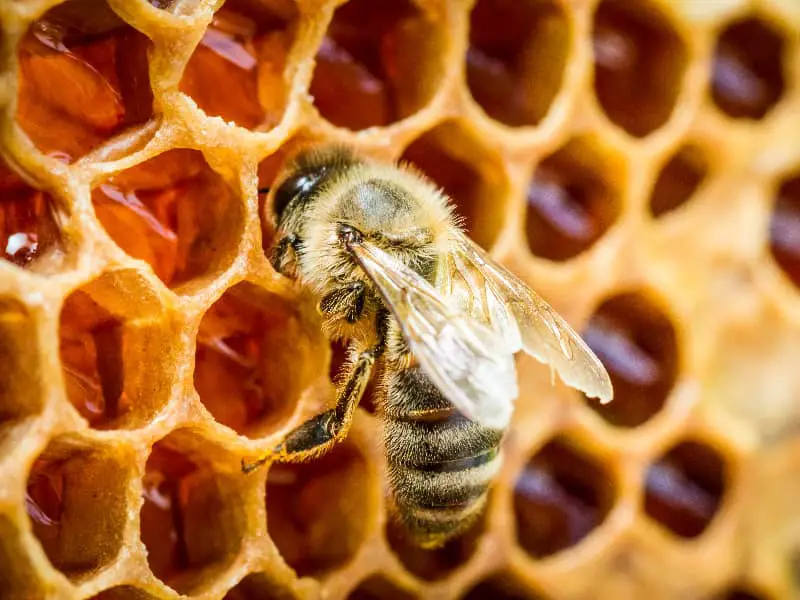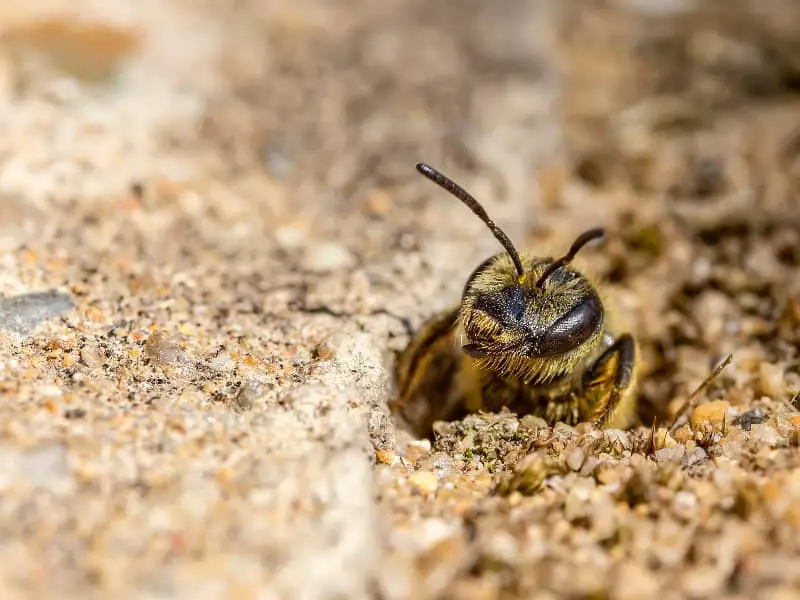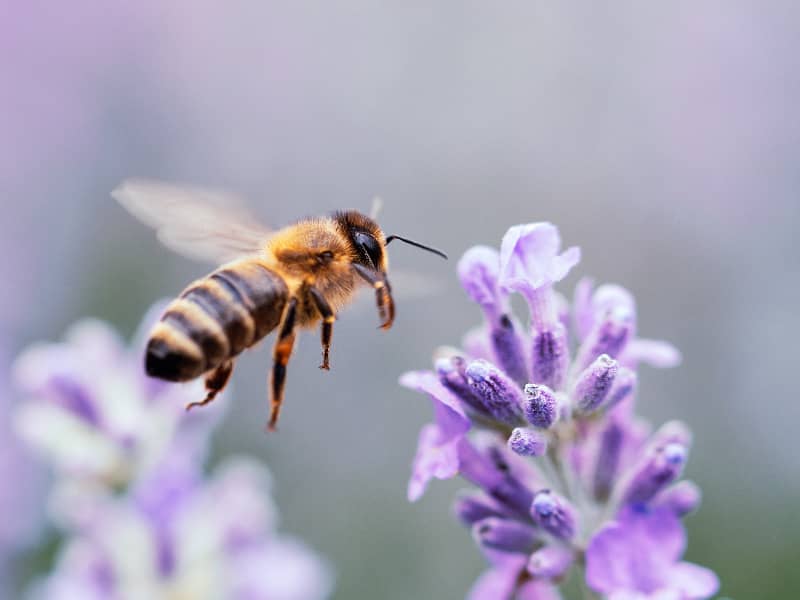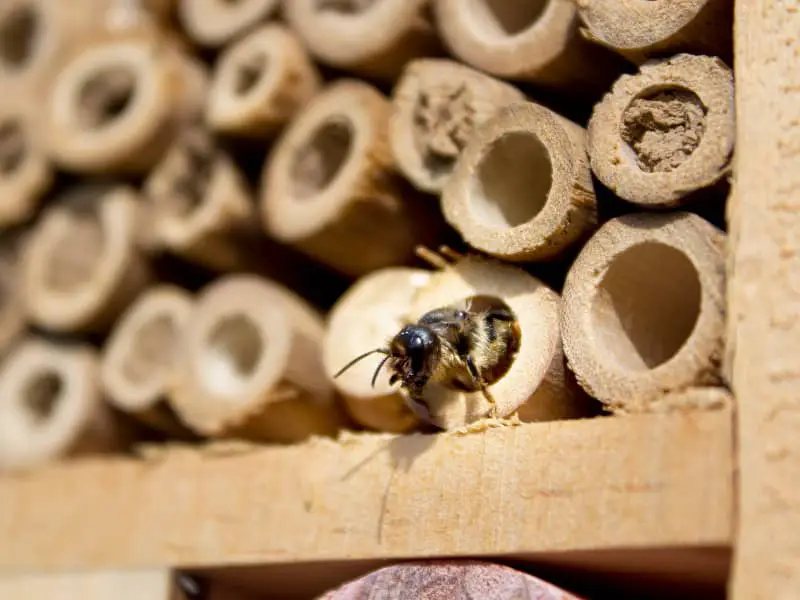
The mason bee
You certainly know the honey bee. But have you ever heard of the mason bee? No? Then let me take you to a world that is just as fascinating.
What is a mason bee?
Mason bees belong to the family Megachilidae. Unlike honey bees, they do not live in colonies. They are solitary, which makes them particularly interesting. They have no constant buzzing around them, no worker bees to take care of the offspring. It is a solo show.
The name "mason bee" comes from the fact that these bees often nest in small holes or cracks in walls. However, they are not pests. Quite the contrary. Their presence can even be beneficial for your garden.
Mason bees and their preference for certain plants
If you have a garden or balcony, it's good to know which plants mason bees like. Because these little insects are great pollinators. Where they appear, there is often a higher yield of fruits or flowers.
Mason bees are less choosy than honey bees. They visit a wide variety of plants. However, they are particularly fond of bluebells, clover, and various fruit trees. So, when you're thinking about what to plant next - think about the mason bee!
An impressive nesting behavior
But how do these bees nest if they don't live in large communities like honeybees? Well, the mason bee is quite creative.
It looks for small crevices, cracks or holes in wood, stone or even in the ground. There she lays her eggs and seals the entrance with clay. This "living space" protects the offspring from predators and provides an ideal microclimate.
Another exciting aspect: mason bees do not collect pollen in special baskets on their legs, as honey bees do. Instead, they carry it on their abdomen. An amazing and effective method!
Dangers and protective measures for the mason bee
Unfortunately, mason bees, like many other insects, are threatened. Habitat loss, pesticides and climate change are affecting them.
So it's important to take steps to help them. How can you do that? For one, by choosing pesticide-free plants. Or placing special nesting boxes for mason bees in your garden. These small steps can make a big difference.
It is also helpful if you take care not to close all cracks and holes in your garden. These are potential nesting sites. And who knows, you may soon have a small colony of mason bees right on your doorstep!
Curious facts about the mason bee
- Color variety: Wall bees come in different shades. From black to metallic blue - they are a real feast for the eyes!
- Not a stitch in sight: Unlike many other bee species, mason bees are not aggressive. They only sting when they feel extremely threatened.
- Turbo-fast development: It only takes a few weeks for mason bees to go from egg to adult bee. A real turbo cycle in the insect kingdom!
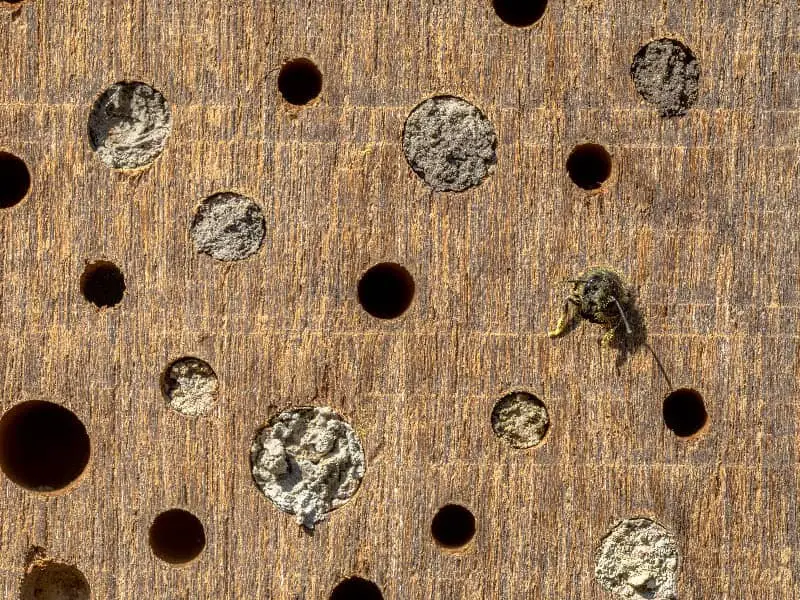
The Wall Bee Diary: A Life in Stages
From egg to larva, larva to pupa and finally to adult bee: the development of a mason bee is fascinating. Each stage has its peculiarities, its challenges and its wonders.
EggWhen the mason bee finds a suitable nest, it lays its eggs inside. Each egg gets its own "room", filled with pollen and nectar. These supplies are essential, because they feed the larva that will soon hatch.
Larva: Once the egg hatches, the next stage of life begins. The larva eats its way through the pollen and nectar stores. After this feeding phase it pupates.
Doll: In this phase the actual metamorphosis takes place. The inconspicuous larva becomes a bee. It is a miracle of nature that takes place in the hidden darkness of the nest.
Adult bee: As soon as the bee is ready, it bursts out of its nest. Now begins its short but active life as a pollinator.
Is it possible to breed mason bees?
The idea of growing mason bees may sound strange to some. But it is possible! With the right nesting aids and a bee-friendly environment, you can provide a habitat for these beneficial insects.
There are special "mason bee hotels" that you can buy or build yourself. These are made of wood with numerous small holes that are perfect for the nesting needs of the mason bee.
What do mason bees do in winter?
While many insects go into "sleep mode" in winter, mason bees overwinter as pupae in their nests. Protected from cold and predators, they wait for spring. When temperatures rise, they complete their metamorphosis and start a new bee year.
Wall bees in the city
Mason bees can survive even in urban areas. They are adaptable creatures. City dwellers can help by planting bee-friendly plants on balconies or in backyards. Hanging a small mason bee hotel can also be helpful.
Conclusion: The fascination mason bee
In our fast-paced times, we tend to overlook the small wonders of nature. Mason bees are one of those wonders. Although overshadowed by their better-known relatives, honeybees, they play an indispensable role in our ecosystem. Their remarkable nesting behavior, pollination efficiency, and adaptability make them an impressive component of the insect world.
For garden lovers and conservationists, mason bees also offer the opportunity to actively contribute to the protection and conservation of these species. Through simple measures, such as providing nesting aids or planting bee friendly flowers, we can help them and enrich our environment at the same time.
Awareness of the importance and beauty of the mason bee is growing. With each person who protects their habitat and shares their story, we move one step closer to a more harmonious coexistence with nature. Ultimately, the mason bee reminds us that great things can be found in even the smallest of things, and that every contribution, no matter how tiny, matters to the balance of our world.
- ✔️ IDEALE NISTBEDINGUNGEN: ca. 600 NISTPLÄTZE Die speziell entwickelten und tausendfach erprobten Niströhren aus Pappe (6&8 mm) bieten Platz für verschiedene Wildbienen. So können sich die Larven geschützt entwickeln und zum gesunden Ökosystem beitragen.
- ✔️ WETTERFESTER SCHUTZ: Das Metalldach schützt verlässlich gegen Regen und Witterungseinflüsse. Die Niströhren aus Pappe sind widerstandsfähig, sollten aber möglichst trocken gehalten werden. So bietet Ihr Bienenhotel Wildbienen ein perfektes Zuhause.
- ✔️ SICHERE & STABILE AUFHÄNGUNG Das Insektenhotel lässt sich mühelos an Wänden, Bäumen oder Zäunen befestigen. Die robuste Konstruktion garantiert eine lange Haltbarkeit egal ob im Garten oder auf dem Balkon.
- ✔️ FSC-ZERTIFIZIERUNG: Gefertigt aus hochwertigen zertifizierten Materialien (Holz & Pappe) trägt dieses Insektenhotel zu einer verantwortungsbewussten Waldwirtschaft bei. So entsteht ein sicherer und artgerechter Unterschlupf im Einklang mit der Natur.
- ✔️Kein Risiko: Sollte das Bienenhotel auf dem Versandweg beschädigt werden, oder Sie aus anderen Gründen mit dem Produkt unzufrieden sein, gibt es Geld zurück – GARANTIERT. Es liegt und am Herzen, das Sie mit den Bienenprodukten von Beesi Biene zufrieden sind.
- Großzügiges Insektenhotel speziell für Wildbienen
- Aus Tannen- und Kiefernholz, Bambus und Sperrholz
- Gut geschützter Rückzugsort für das ganze Jahr
- Zum einfachen Aufhängen
- 🐝 Für wichtige Wildbienenarten: Optimal für Mauerbienen, Blattschneiderbienen und weitere Arten – abgestimmt auf deren natürliche Bedürfnisse.
- 💪 Robust & langlebig: Aus wetterfestem PETG – UV-beständig, schimmelresistent, ohne Risse oder Verrottung wie bei Holz.
- 📏 300 Niströhren aus Kraftpapier: Ca. 100 Stück Ø 6 mm für kleine Arten, ca. 200 Stück Ø 8 mm für größere Bienen.
- 🔑 Durchdachte Röhrenlänge (145 mm): Wichtig denn die Bienen lassen nach dem ersten Verschluss einen Hohlraum –> Schutz vor Vogelfraß.
- 🌿 Nachhaltig & bienenfreundlich: Unsere Kraftpapier-Röhren sind widerstandsfähig, feuchtigkeitsbeständig (sie quellen nicht auf!) und für Bienen leicht zu reinigen.
- Die Größe beträgt ca. 78 cm x 8,5 cm x 5,5 cm (Höhe x Breite x Tiefe)
- Material: Holz
- Farbe: beige
- mit verschiedenen natürlichen Materialien gefüllt
- Erdspieß wird einfach im Gartenboden versenkt
- Dieses hochwertige und sehr bienenfreundliche Hotel aus Kiefernholz und Bambus bietet durch unterschiedlich große Bambusröhrchen Unterschlupf für eine große Vielfalt an Wildbienenarten
- Helfen und Lernen: Vielen gefährdeten Wildbienenarten hilft diese Nist- und Überwinterungshilfe. Dazu bietet das Booklet Informationen zu den Themen Wildbienen, Bienensschutz und - hotel
- Tipp: Das Bienenhotel an einem sonnigen Platz fest anbringen und möglichst vor Regen und Wind schützen. Zur Pflege des Kiefernholzes kann Leinöl verwendet werden
- Bambusröhrchen: Die Röhrchen können immer wieder neu „besiedelt“ werden und müssen dabei nicht ausgetauscht oder gereinigt werden
- Scope of delivery: A bee hotel with the dimensions approx. 14 cm x 26 cm x 8.3 cm, a booklet with useful tips and information from nature expert Bärbel Oftring.
Author

-
Garden animal - A life with nature
Welcome to my animal blog! My name is Dirk and I am happy to take you on my journey through the fascinating world of animals and gardening.
Born 54 years ago, I have had an insatiable curiosity for the animal world around me since childhood. Although I have moved professionally in other industries, my true passion has always been animals and nature. It is remarkable how a small garden has become such an important part of my life.
Many of my fondest memories are associated with the animals that share our home. Whether it's the curious squirrels that scurry across the trees in the morning, the colorful variety of birds that visit our feeders, or the busy bees and butterflies that pollinate our flowers, every moment with them is invaluable to me.
This blog is my contribution to share my experiences, discoveries and insights with like-minded people. Here I will share stories of unforgettable encounters with animals, give tips on gardening and creating wildlife-friendly habitats, and take you on my journeys through nature.
Thank you so much for being here!
Cordial,
Dirk aka garden animal
Last posts
- 27. February 2024PetsVeganes Hundefutter – Grün und Gesund?
- 18. January 2024ChickensOregano für Hühner
- November 27, 2023HamsterDiurnal hamsters
- November 24, 2023HamsterHamster hammock
Letzte Aktualisierung am 2025-07-03 / Affiliate Links / Bilder von der Amazon Product Advertising API






